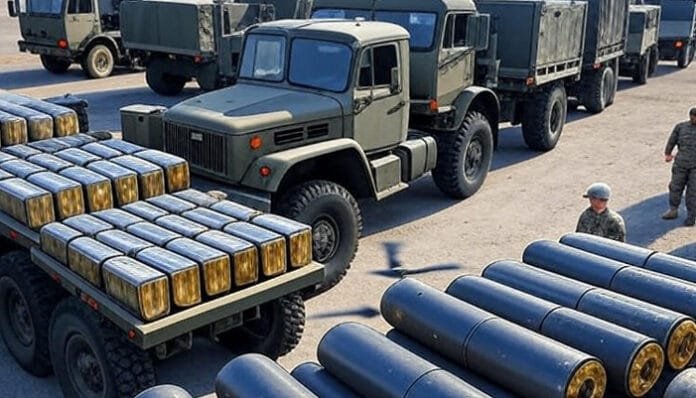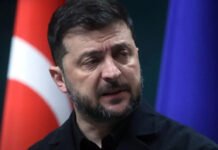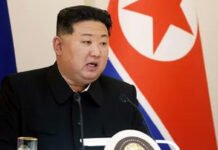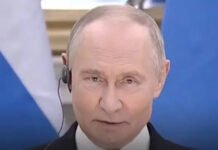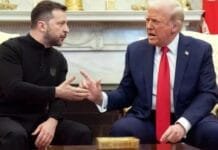The U.S. defense policy towards Ukraine has entered a phase marked by uncertainty, internal miscommunication, and an abrupt change in execution. Recent developments have revealed inconsistencies within the Trump administration, particularly concerning the delivery of critical military aid to Ukraine amid escalating Russian aerial assaults. The Pentagon’s reversal of a prior halt in arms supplies has not only baffled allies but has also fueled questions about policy coherence in Washington.
Pentagon Resumes Weapons Delivery: Uncertainty Prevails
After a brief pause in military aid shipments, the Pentagon has resumed sending weapons to Ukraine, including 155mm artillery shells and guided rockets. Yet, there has been no clarity on the exact timeline of this reversal. According to Pentagon spokesperson Sean Parnell, only the President and Secretary of Defense have the authority to make definitive announcements regarding arms flow. This statement has only intensified speculation about the lack of alignment between different arms of the U.S. government.
While the Pentagon had cited a routine inventory check as the reason for the temporary suspension, the absence of public disclosure about which systems were withheld created confusion across diplomatic and military channels. Analysts now believe the abrupt nature of this pause and its swift reversal point toward a deeper disconnect between the Department of Defense, the White House, and senior national security officials.
White House Unaware of Halted Shipments
Adding to the turmoil, sources within the White House expressed shock over the Pentagon’s initial decision to halt supplies. A senior administration official claimed that there had been no official embargo on shipments to Ukraine, suggesting that the order to pause came without consultation or notification at the highest executive levels. This revelation underscores a broader issue: a communication breakdown between military leadership and civilian oversight.
The surprise and confusion were particularly significant given that the weapons in question—Patriot missiles, GMLRS rockets, and Hellfire missiles—are central to Ukraine’s frontline defense. That such critical decisions could occur without consensus or full transparency illustrates a fragmented policymaking structure, which may have broader implications for international confidence in U.S. commitments.
President Trump’s Disappointment with Defense Leadership
In the midst of this strategic confusion, President Trump publicly voiced his frustration with Pentagon officials. Though he refrained from identifying who gave the initial order to halt arms supplies, his discontent with the Defense Department’s handling of the situation was unmistakable.
Trump reaffirmed that the United States will continue to support Ukraine with defensive weapons, seemingly distancing himself from the earlier decision. This rhetorical pivot aligns with his recent toughened stance against Russia, especially after the failure of ceasefire negotiations.
The President’s dissatisfaction was further reflected in reports that he has demanded more direct oversight on arms transfers moving forward. The chain of command confusion, particularly involving Defense Secretary Pete Hegseth, has raised questions about operational control and policy execution within the current administration.
Defense Secretary Pete Hegseth Denies Acting Unilaterally
Despite being named in multiple reports as the official who ordered the halt, Defense Secretary Pete Hegseth has categorically denied making such a decision without presidential approval. A spokesperson for the Pentagon clarified that the temporary suspension was a “logistical reassessment” intended to ensure stockpile readiness and not a strategic shift.
Still, the lack of internal coordination has fueled criticism from both domestic lawmakers and international observers. Given the timing of Russia’s intensified military offensives, many argue that such lapses in U.S. defense policy not only undermine Ukraine’s security but also embolden Russian advances.
Strategic Impact on U.S.-Ukraine Relations
The U.S. policy confusion comes at a critical moment in the Russia-Ukraine conflict. With Russian airstrikes increasing in frequency and intensity, Ukraine’s need for precision weaponry and sustained logistical support has never been greater. The mixed signals from Washington threaten to disrupt operational planning on the Ukrainian side and raise doubts about America’s long-term reliability as a military ally.
Additionally, the resumption of some supplies—but not all—leaves significant gaps in Ukraine’s defense capabilities. It remains unclear whether the Patriot missile systems and howitzer rounds, which were among the items reportedly paused, are now back in active shipment status. The lack of official communication on these details has fueled further uncertainty.
Global Allies Watching Closely
U.S. partners in NATO and beyond are observing this internal misalignment with increasing concern. The credibility of U.S. commitments—especially when supporting democratic nations under threat—rests heavily on clear and consistent execution of defense policies.
Any perceived wavering or administrative disunity may encourage adversarial powers like Russia and China to exploit these gaps in Western coordination. Already, diplomatic channels in Europe have reported a rise in inquiries about the status of American defense shipments to Ukraine.
Calls for Transparency and Oversight
Members of Congress, including ranking defense committee officials, have begun demanding greater transparency and oversight on all matters related to U.S. military aid. Bipartisan voices are now calling for regular public briefings and classified updates to ensure that policy and implementation are in sync.
The lack of clarity about who halted—and later resumed—the aid has prompted discussions around creating standardized protocols for major military assistance decisions, ensuring they reflect executive consensus and legislative oversight.
A Sign of Shifting U.S.-Russia Dynamics?
This policy whiplash may also signal a broader shift in the Trump administration’s attitude toward Russia. After initially positioning himself as a mediator who could broker peace between Moscow and Kyiv, Trump’s latest posture suggests growing frustration with Putin’s unwillingness to negotiate.
The decision to resume arms shipments—especially amid heightened Russian aggression—points to a recalibration in Washington’s approach, one that might prioritize strength through deterrence over diplomatic appeasement.
Conclusion: A Crisis of Coordination
The recent events underscore a crisis in internal communication and policy coordination within the U.S. government. The implications extend beyond Ukraine and touch on broader questions of military strategy, alliance management, and global trust in American leadership.
With Russia ramping up hostilities and Ukraine relying heavily on U.S. support, decisive, transparent, and coordinated action from Washington is imperative. Any further missteps could not only weaken Ukraine’s defense posture but also reshape global perceptions of America’s strategic reliability.

